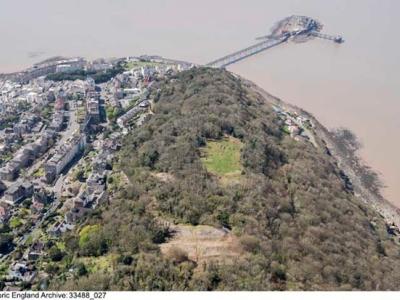Worlebury Camp is an Iron Age hillfort that occupies 10 hectares of land at Worlebury Hill, a site that overlooks Weston Bay, Sand Bay, and the Bristol Channel.
It has been designated a scheduled monument since 1915, and is a nationally important archaeological site due to its rare coastal location, size and considerable defences.
The hillfort is mostly hidden by trees that were planted in the 1820s, but before the 19th century the hillfort would have been visible for miles around.

